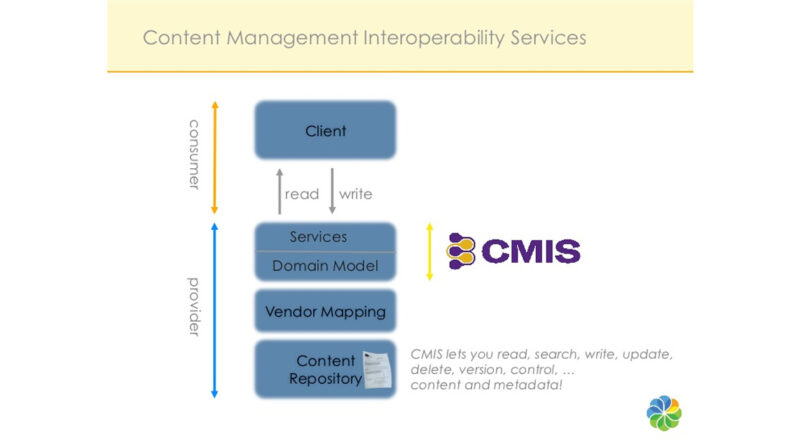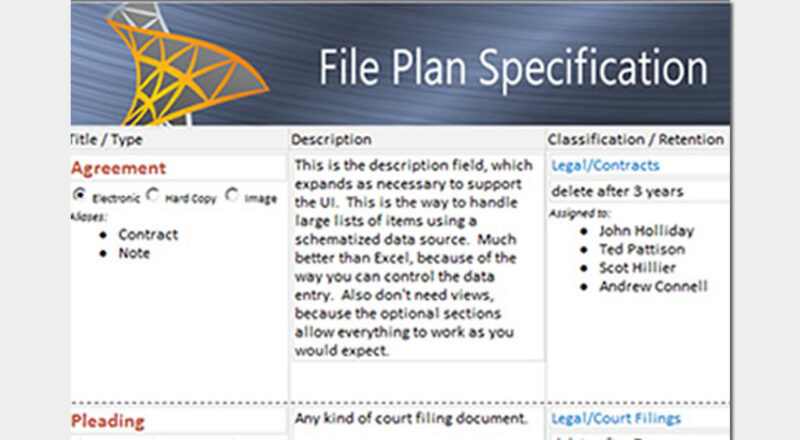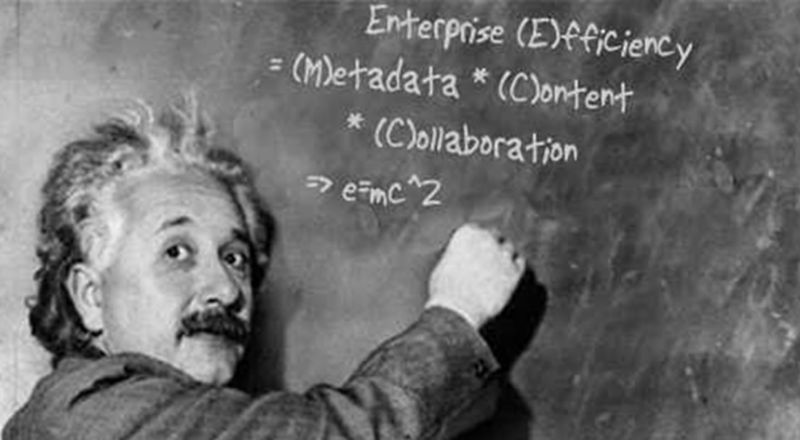There is a new standards effort in the works that promises to unify the disparate ECM platforms currently available into a common set of interfaces. The Content Management Interoperability Services (CMIS) specification is the result of a collaboration between Microsoft, IBM, EMC, Alfresco, OpenText, SAP and Oracle. Click here to download a preview copy of the spec.
First impressions:
The specification tries to define the "core" components of any ECM system. On the one hand, this is good because we at least need to agree on common terms. For example, the whole "content type" versus "object type" debate is important to get resolved. On the other hand, with such a young paradigm, it's not yet clear what functionality will be the winning market differentiator for any given vendor, thus thwarting further attempts to refine the specification. To that end, the group has submitted the draft specification to the OASIS consortium so that others can join the effort. This is a good move and will hopefully lead to faster refinement.
- The primary goal of the spec at this stage seems to be to provide a common set of SOA endpoints for the different ECM offerings from the vendors involved. There are SOAP and REST/Atom protocol bindings for its proposed "domain model", each of which are explicitly required for conformance with the standard.
- The spec does not cover administration, configuration or security, and includes within its definition of "administration" the modification of Object Types. This is a bit of a disappointment, but not surprising given the different interpretations of that term. Yet, the explicit exclusion of such a fundamental set of methods again reflects the newness of the paradigm and the difficulty of defining a common object model.
- The data model focuses on the ability to create and access a repository, but explicitly excludes anything defined as "transient", which includes such important concepts as compound document, workflow, event and subscription. Here again, we see what appears to be disagreement on first principles. The result is that the data model describes only low-level components, such as object, property, document, folder, relationship and policy.
- CMIS supports versions for document objects, and also includes a standardized query model based on a subset of SQL. This is very nice, because it means that clients will be able to submit SQL SELECT statements to retrieve objects from multiple ECM vendors. This will include searches based on object properties and folder membership as well as full text searches.
The spec at this point is pretty low-level, similar to the Open XML Formats packaging API, but offers a strong first step toward cooperation among the ECM vendors in providing a common set of tools for accessing disparate content repositories.
The query specification is interesting, and includes a few sample queries that I'm anxious to dig into. There are also some good examples of how versioning, checkin and checkout will work. Hopefully, I'll get a chance to go into these in some detail in the coming weeks.
Stay tuned.





